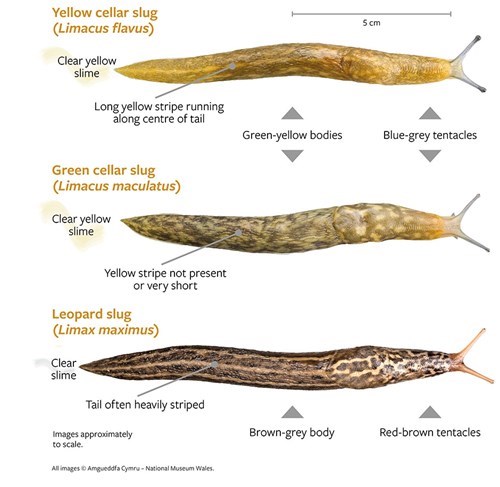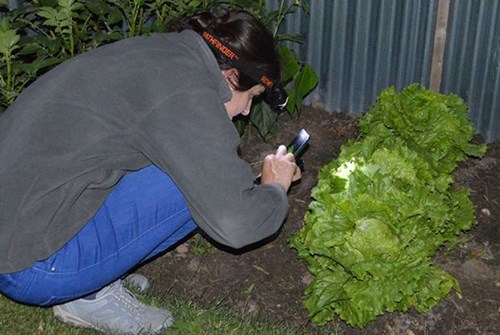What are Cellar Slugs?
The Yellow Cellar Slug (Limacus flavus) was first recorded in the UK in 1884. In the 1970’s a second similar looking species was recognised, first in Ireland then spreading quickly throughout the UK, the Green Cellar Slug (Limacus maculatus). Since then, records of the Yellow Slug have declined sharply.
Has the Green Cellar Slug taken over? Are we about to witness the extinction of a slug in Britain? We need your help to find out!
We invite you to look for both or either of these species, and help us identify what garden features may influence where these slugs are residing.
Both these slug species are known to be detritivores, feeding on decaying plant material in gardens. They are not considered plant pests as they do not feed on live plant material.
Doing a slug hunt
- Grab a torch and go on a slug hunt in your garden after dark to see if you can find this nocturnal species
- Take photographs showing the top view of each slug (you may want to move the slugs somewhere light to do this)
- Match your slug to the ID guide to see what species you have
- Keep a note of how long you spent searching and how many of these slugs you found
- Also note if you find these slugs on a plant and what type of plant it is (if known)
- Go to the Cellar Slug recording form on iRecord and enter your survey data. You don’t have to register, but you will be asked to provide an email address so that the RHS and iRecord expert verifiers can contact you if they have questions about your record. You may wish to register with the iRecord website so that you can keep track of your records and go back to them if needed.
Identifying the slugs

The Leopard Slug (Limax maximus) has been included in the ID guide as it is strikingly similar in size, appearance and nocturnal behaviour. We also welcome records of this slug through the survey form, though it is not the target of our research.
For full details and to download the slug ID guide, please click here.

